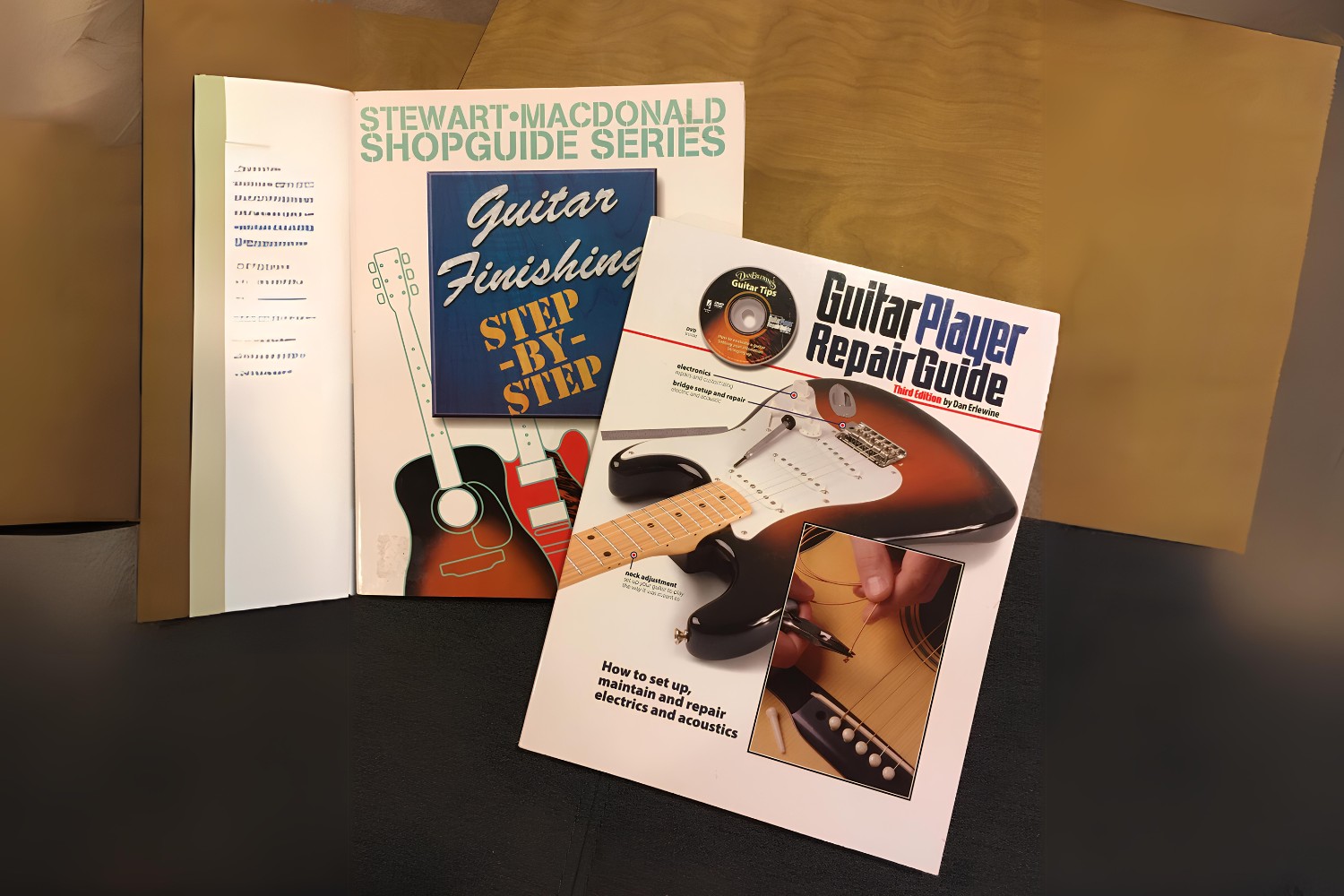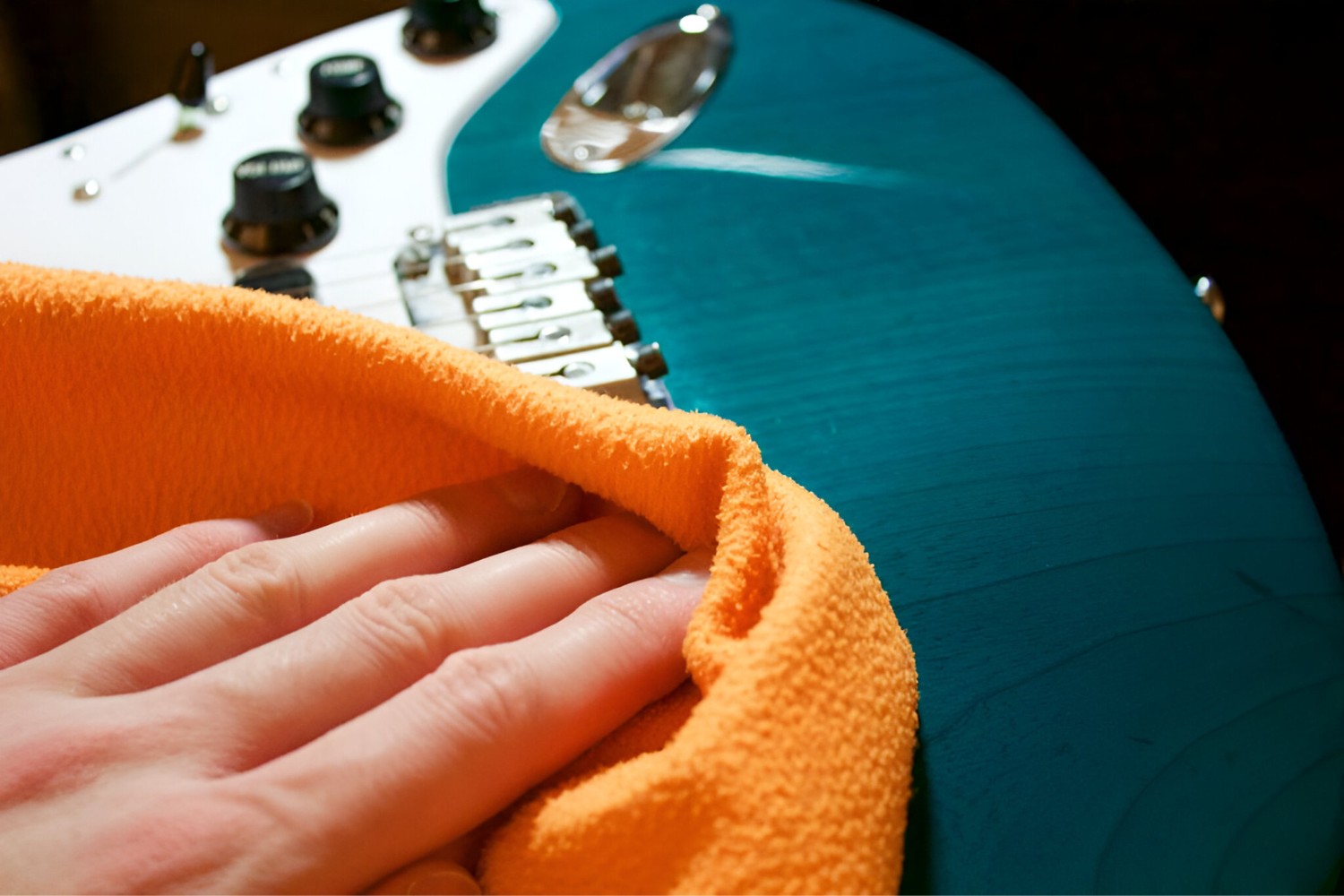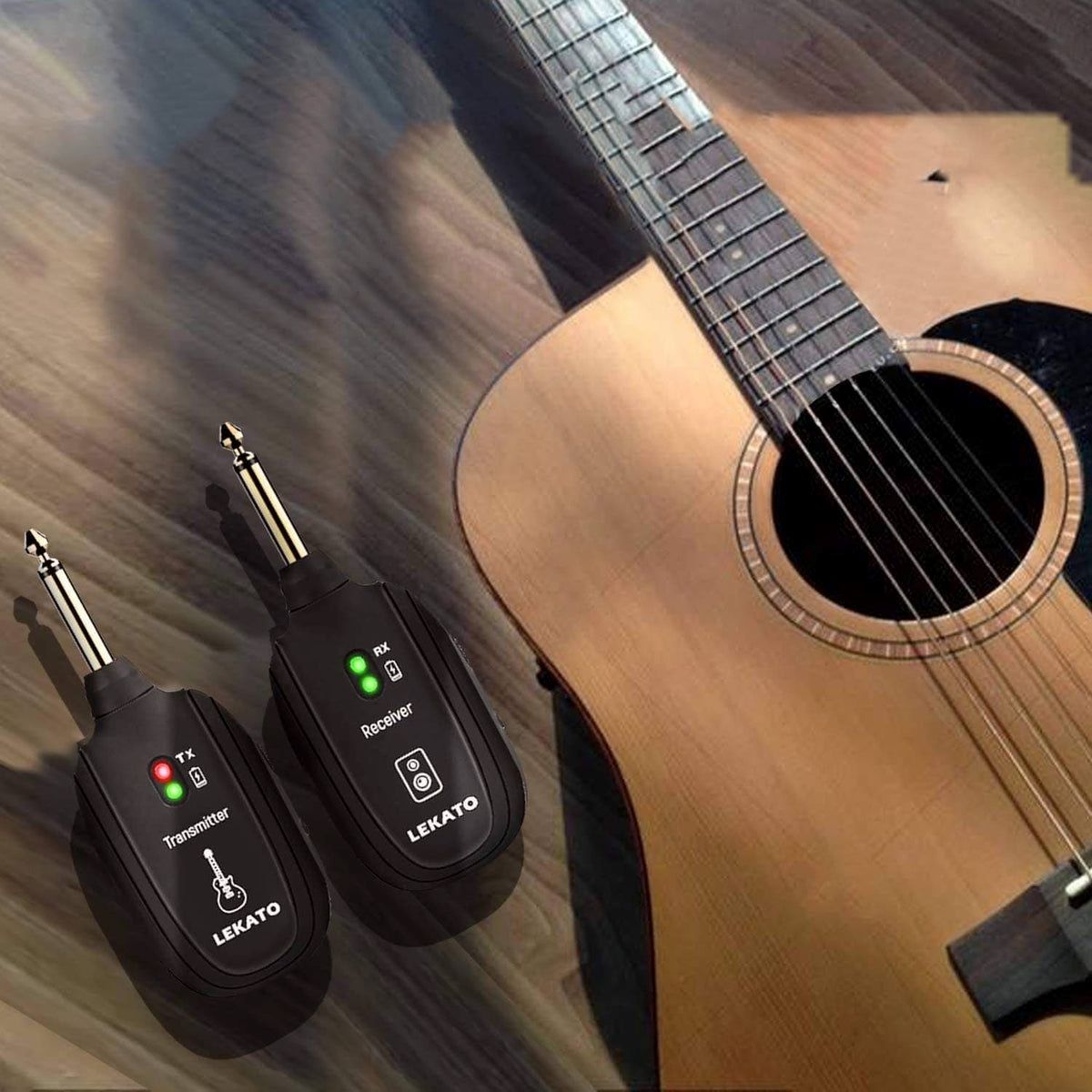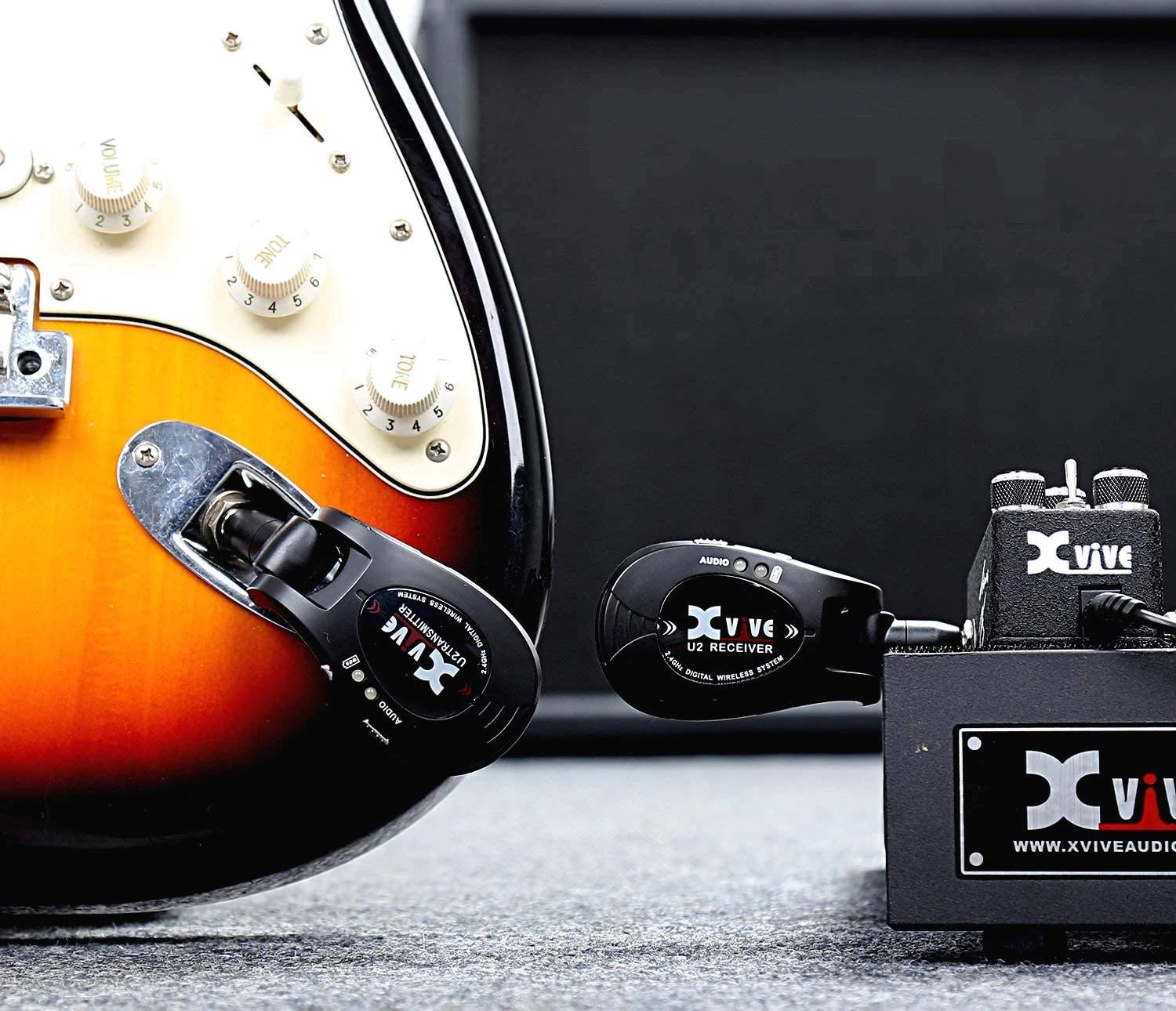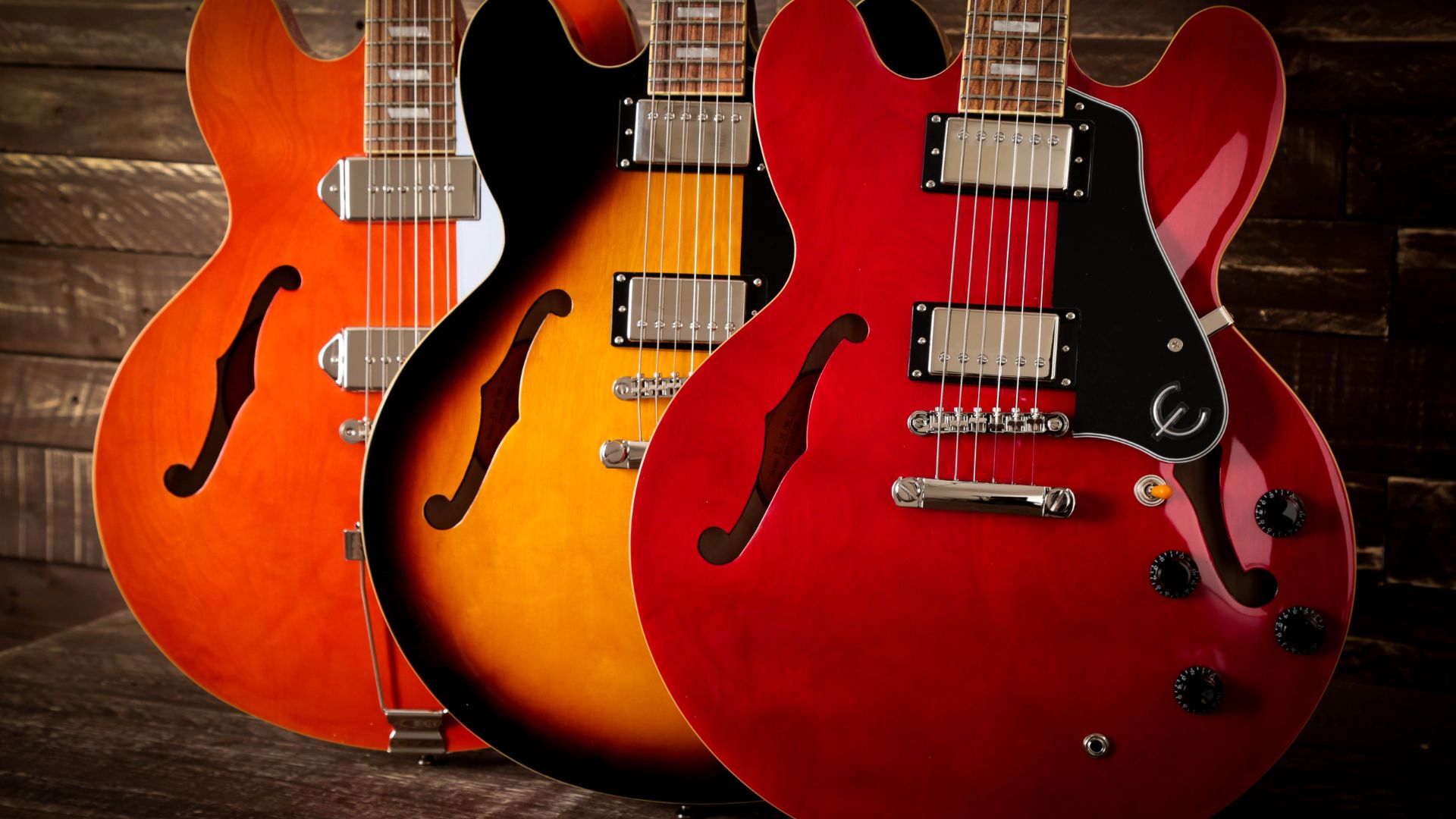Dan Erlewine: The Master of Guitar Setup and Repair
Dan Erlewine is a renowned guitar repair expert and author who has made a significant impact on the world of luthiery and guitar maintenance. With over 50 years of experience, Dan has become a trusted authority in the field, sharing his knowledge through numerous books, articles, and instructional videos. His passion for guitars and dedication to helping musicians achieve the best possible performance from their instruments have earned him a widespread following and immense respect within the music community.
Dan Erlewine's expertise extends beyond simple repairs; he is a master craftsman who understands the intricate mechanics of the electric guitar. His profound understanding of the instrument's design, construction, and playability has made him a go-to resource for professional musicians, hobbyists, and aspiring luthiers alike. Through his work at Stewart-MacDonald's Guitar Shop Supply, Dan has contributed significantly to the development of specialized tools and resources tailored to the unique needs of guitar enthusiasts and repair professionals.
Moreover, Dan's influence reaches far beyond his technical skills. His ability to communicate complex concepts in a clear, accessible manner has empowered countless individuals to take control of their instrument's maintenance and setup. His teachings have inspired a new generation of guitar enthusiasts to delve into the art of guitar repair, fostering a community of passionate individuals dedicated to preserving and enhancing the performance of their beloved instruments.
In the realm of guitar setup and repair, Dan Erlewine stands as a beacon of knowledge, innovation, and unwavering dedication. His impact on the industry is immeasurable, and his legacy continues to shape the way musicians and luthiers approach the care and maintenance of their electric guitars. As we delve into the world of electric guitar setup, we will draw upon Dan's wisdom and expertise to guide us through the essential steps of achieving optimal playability and performance.
Understanding the Electric Guitar
Before delving into the intricacies of electric guitar setup, it’s essential to grasp the fundamental components and characteristics of this iconic instrument. Unlike acoustic guitars, electric guitars rely on electronic amplification to produce sound, offering a unique tonal palette and versatility. The electric guitar comprises several key elements that contribute to its distinctive sound and playability.
Body and Neck: The body of an electric guitar can be crafted from various tonewoods, each imparting specific tonal qualities and aesthetic appeal. The neck, typically attached to the body, plays a crucial role in determining the instrument’s playability and resonance. Understanding the anatomy of the guitar’s body and neck is essential for making informed setup adjustments.
Pickups and Electronics: Electric guitars feature pickups, which capture string vibrations and convert them into electrical signals. These signals are then transmitted to an amplifier, shaping the guitar’s sound. Different pickup configurations, such as single-coil and humbucker pickups, offer distinct tonal characteristics, influencing the instrument’s overall sonic profile.
Hardware and Bridge: The hardware components, including the bridge, tuners, and controls, contribute to the guitar’s functionality and tuning stability. The bridge, in particular, affects intonation and string action, making it a critical element to consider during the setup process.
Playability and Sound: Electric guitars are prized for their playability and versatility, allowing musicians to explore a wide range of musical genres and playing styles. Achieving optimal playability involves addressing factors such as string action, neck relief, and intonation, all of which significantly impact the instrument’s feel and tonal characteristics.
By comprehending the inner workings of the electric guitar and recognizing the interplay between its components, musicians and luthiers can approach setup and maintenance tasks with a deeper understanding of how each adjustment influences the instrument’s performance. This foundational knowledge sets the stage for executing precise and effective setup techniques, ultimately enhancing the electric guitar’s playability and sonic potential.
Tools and Supplies You’ll Need
Embarking on the journey of electric guitar setup and maintenance requires the use of specialized tools and supplies tailored to the instrument’s unique requirements. Equipping yourself with the following essential items will empower you to execute precise adjustments and ensure the optimal playability and performance of your electric guitar.
- Truss Rod Wrench: This tool allows for adjustments to the guitar’s truss rod, which controls the neck’s relief and curvature, influencing playability and string action.
- Feeler Gauges: Utilized for measuring the gap between the frets and strings, feeler gauges aid in setting precise string action and assessing neck relief.
- Capo: A capo is invaluable for simulating string tension and facilitating adjustments to the guitar’s nut and intonation.
- String Action Gauge: This tool enables accurate measurement of string height above the fretboard, ensuring consistent and comfortable playability across the fretboard.
- Needle Files: Essential for filing and shaping the nut slots to achieve proper string clearance and prevent buzzing or intonation issues.
- Lubricant: Using specialized lubricants for the nut and bridge ensures smooth string movement, reducing friction and enhancing tuning stability.
- Fretboard Conditioner: To maintain the fretboard’s integrity and playability, a high-quality fretboard conditioner is indispensable for cleaning and conditioning the wood.
- Screwdrivers and Allen Keys: A set of precision screwdrivers and Allen keys enables adjustments to the guitar’s hardware, including bridge height, pickup height, and truss rod access.
- Electronic Tuner: An accurate tuner is essential for setting precise intonation and ensuring the guitar remains in tune across the fretboard.
- Microfiber Cloth: Keeping the guitar clean is essential, and a soft microfiber cloth is ideal for gentle cleaning and polishing without causing damage to the instrument’s finish.
By assembling a comprehensive toolkit comprising these essential tools and supplies, you will be well-equipped to address various aspects of electric guitar setup and maintenance with confidence and precision. Investing in high-quality tools and maintaining them properly will significantly contribute to the long-term care and optimal performance of your beloved instrument.
Assessing Your Guitar’s Playability
Prior to initiating the setup process, it is crucial to conduct a comprehensive assessment of your electric guitar’s playability, identifying areas that require adjustment to optimize its performance. By evaluating specific aspects of the instrument’s playability, you can pinpoint areas of concern and lay the groundwork for targeted setup procedures.
String Action: Begin by assessing the string action, or the height of the strings above the frets. Uneven or excessively high string action can impede playability and cause intonation issues, while excessively low action may lead to fret buzz. Using a string action gauge, measure the string height at various points along the fretboard to identify areas requiring adjustment.
Neck Relief: The neck’s curvature, known as relief, significantly influences the guitar’s playability. Insufficient relief can cause fret buzz, while excessive relief may result in high string action. Using a feeler gauge, assess the gap between the strings and frets around the 7th-9th frets to determine the neck’s curvature and identify any deviations from the optimal relief.
Intonation: Accurate intonation is essential for ensuring that the guitar plays in tune across the entire fretboard. Using an electronic tuner, check the tuning accuracy of each string at the 12th fret. Any discrepancies between the open string and 12th fret pitches indicate the need for intonation adjustments to achieve harmonious and accurate tuning.
Nut and Bridge Condition: Inspect the nut and bridge for signs of wear, binding, or uneven string spacing. A properly lubricated nut and bridge facilitate smooth string movement, contributing to tuning stability and playability. Additionally, assess the nut slots for proper string clearance, ensuring that the strings move freely without binding or catching.
By meticulously evaluating these critical aspects of your guitar’s playability, you can gain valuable insights into the specific adjustments required to enhance its performance. This initial assessment serves as a foundational step, guiding the subsequent setup procedures and empowering you to address the instrument’s playability with precision and expertise.
Adjusting the Neck and Truss Rod
The neck of an electric guitar plays a pivotal role in determining playability and overall performance. Proper neck adjustment, facilitated by the truss rod, is essential for achieving optimal string action and neck relief. Understanding the nuances of adjusting the neck and truss rod empowers musicians and luthiers to fine-tune the instrument’s playability with precision and expertise.
Assessing Neck Relief: Before making any truss rod adjustments, evaluate the neck’s relief by measuring the gap between the strings and frets around the 7th-9th frets using a feeler gauge. Ideally, the gap should allow for comfortable string vibration without causing fret buzz or excessive string action. Identify any deviations from the desired relief, noting whether the neck exhibits excessive curvature or is overly straight.
Truss Rod Adjustment: To address deviations in neck relief, adjustments to the truss rod may be necessary. Using a truss rod wrench that matches the specific truss rod nut, carefully make incremental adjustments, typically in quarter-turn increments, to achieve the desired neck curvature. Clockwise turns typically increase neck relief, while counterclockwise turns reduce relief. Exercise caution to avoid over-tightening the truss rod, as this can lead to neck damage or excessive relief.
Monitoring Changes: After each truss rod adjustment, allow the neck to acclimate to the changes for a period before reassessing the relief. It is essential to monitor the impact of the adjustments and make further modifications as needed to achieve the optimal balance of neck relief, ensuring that the strings resonate freely without encountering obstacles or causing fret buzz.
Environmental Considerations: It’s important to note that environmental factors, such as humidity and temperature, can influence the neck’s curvature. Periodic adjustments to the truss rod may be necessary to accommodate seasonal changes in environmental conditions, preserving the guitar’s playability and structural integrity.
By mastering the art of neck and truss rod adjustments, individuals can proactively address playability issues and maintain the optimal performance of their electric guitars. This foundational aspect of guitar setup empowers enthusiasts to cultivate a deep understanding of their instruments, fostering a harmonious relationship between musician and guitar.
Setting the Action and Intonation
Adjusting the string action and intonation is a critical step in achieving optimal playability and tonal accuracy on an electric guitar. By meticulously addressing these aspects of the instrument’s setup, musicians and luthiers can ensure that the strings resonate harmoniously and the guitar responds with precision across the fretboard.
String Action Adjustment: The string action, or the height of the strings above the frets, profoundly influences the guitar’s playability and responsiveness. Using a string action gauge, measure the string height at various points along the fretboard, ensuring that the action is consistent and comfortable across all strings. Make incremental adjustments to the bridge height, balancing the string action to achieve an optimal blend of comfort and playability without inducing fret buzz or compromising tonal quality.
Intonation Calibration: Accurate intonation is essential for ensuring that the guitar plays in tune across the entire fretboard. Using an electronic tuner, compare the pitch of each string when played open and at the 12th fret. If discrepancies are detected, adjustments to the string length at the bridge are necessary to achieve precise intonation. Fine-tune the saddle positions to harmonize the open string and 12th fret pitches, ensuring that the guitar maintains accurate tuning throughout its range.
Playing Feel and Tonal Response: As the string action and intonation are refined, pay close attention to the guitar’s playing feel and tonal response. Strive to achieve a balance that facilitates effortless fretting and bending while maintaining tonal clarity and sustain. By iteratively adjusting the action and intonation, musicians can tailor the instrument’s setup to their playing style and sonic preferences, fostering a deeply personalized and inspiring playing experience.
Testing and Iteration: Following each adjustment to the string action and intonation, thoroughly test the guitar’s playability and tonal response across various playing styles and musical passages. Iterative refinement allows for fine-tuning the setup to achieve an optimal balance of playability, tone, and responsiveness, ensuring that the instrument meets the player’s exacting standards.
By methodically addressing the string action and intonation, individuals can unlock the full sonic potential and playability of their electric guitars. This meticulous process of setup and calibration empowers musicians to forge a deeply symbiotic connection with their instruments, elevating their musical expression and creativity.
Filing the Nut Slots
The nut of an electric guitar plays a crucial role in maintaining proper string spacing, clearance, and stability, ultimately influencing the instrument’s playability and tuning accuracy. Filing the nut slots with precision and care is essential for ensuring smooth string movement, optimal string action, and reliable intonation across the fretboard.
Assessing String Clearance: Begin by evaluating the nut slots to determine whether the strings move freely without binding or catching. Insufficient clearance can lead to tuning instability and hinder the strings’ ability to resonate freely, while excessive clearance may cause buzzing or compromise intonation. Using feeler gauges, ascertain the current string clearance in the nut slots, identifying areas that require adjustment.
Utilizing Proper Files: Selecting the appropriate nut slot files is crucial for achieving precise and consistent string clearance. Nut slot files are available in various gauges corresponding to different string diameters, allowing for tailored adjustments to accommodate the specific string set being used. Exercise caution and patience when filing the nut slots, as excessive material removal can compromise the nut’s structural integrity and necessitate replacement.
Ensuring Uniform String Spacing: While filing the nut slots, maintain a focus on preserving uniform string spacing, aligning with the instrument’s scale length and fretboard radius. Consistent string spacing contributes to balanced string tension and facilitates comfortable fretting and chord voicings, enhancing the guitar’s playability and ergonomic feel.
Refining String Action and Intonation: As the nut slots are meticulously filed to achieve optimal string clearance and spacing, revisit the string action and intonation adjustments to ensure that the guitar’s setup remains cohesive. Fine-tune the bridge height and saddle positions to complement the refined nut slots, harmonizing the instrument’s playability and tonal accuracy across all registers.
By approaching the task of filing the nut slots with precision and attention to detail, individuals can elevate the playability and tuning stability of their electric guitars, fostering a seamless and inspiring playing experience. This nuanced aspect of setup empowers musicians to cultivate a deep understanding of their instruments, forging a harmonious connection between player and guitar.
Lubricating the Nut and Bridge
Applying lubrication to the nut and bridge of an electric guitar is a vital yet often overlooked aspect of setup and maintenance. Proper lubrication facilitates smooth string movement, reduces friction, and enhances tuning stability, ultimately contributing to the instrument’s playability and overall performance.
Nut Lubrication: The nut serves as a critical point of contact for the strings, directly influencing their movement and stability. Applying a specialized nut lubricant, such as graphite or Teflon-based compounds, reduces friction between the strings and nut slots, promoting seamless string movement and mitigating binding or sticking. Carefully apply a small amount of lubricant to the nut slots, ensuring even distribution without excess buildup.
Bridge Lubrication: The bridge, including the saddle contact points, is another pivotal area where lubrication can significantly enhance the guitar’s performance. By applying a thin layer of lubricant to the saddle contact points and string slots, friction is minimized, allowing for consistent string movement and improved tuning stability. Selecting a high-quality bridge lubricant tailored to the guitar’s specific bridge design is essential for optimal results.
String Retainer Lubrication: In guitars equipped with string retainers or trees, applying a small amount of lubricant to the contact points can alleviate string binding and enhance tuning stability. This simple yet effective step contributes to uniform string tension and facilitates smooth string movement, particularly in instruments featuring angled headstocks or non-linear string paths.
Regular Maintenance: Periodic reapplication of lubricants to the nut, bridge, and string retainers is recommended to maintain optimal performance and prevent the accumulation of debris or residue that may impede string movement. Additionally, consistent maintenance preserves the integrity of these critical components, prolonging their longevity and ensuring reliable performance over time.
By incorporating the practice of lubricating the nut and bridge into the guitar maintenance routine, musicians and luthiers can elevate the playability and reliability of their electric guitars. This often overlooked aspect of setup and care underscores the significance of meticulous attention to detail, fostering a harmonious and responsive playing experience that inspires creativity and musical expression.
Cleaning and Conditioning the Fretboard
The fretboard of an electric guitar not only serves as a foundational playing surface but also contributes to the instrument’s tonal character and overall aesthetic appeal. Regular cleaning and conditioning of the fretboard are essential maintenance practices that preserve its integrity, playability, and visual allure, ensuring a harmonious and inspiring playing experience.
Removing Accumulated Debris: Begin the cleaning process by carefully removing accumulated dirt, grime, and residue from the fretboard. Using a soft, lint-free cloth or an appropriate fretboard cleaning tool, gently wipe the fretboard to eliminate surface contaminants and debris that may hinder string movement or compromise the fretboard’s appearance.
Hydrating the Wood: Depending on the fretboard material, such as rosewood, ebony, or maple, applying a high-quality fretboard conditioner is essential for maintaining the wood’s moisture balance and structural integrity. Fretboard conditioners formulated specifically for the respective wood types nourish the fretboard, preventing drying, cracking, and warping, while enhancing the wood’s natural beauty.
Removing Stubborn Residue: In cases where stubborn residue or buildup is present on the fretboard, utilizing a mild solvent or specialized fretboard cleaning solution can effectively dissolve and remove the contaminants without compromising the wood’s finish or integrity. Exercise caution and select products that are safe for use on the specific fretboard material to avoid damage or discoloration.
Protecting Fretboard Inlays: Fretboard inlays, such as dots, blocks, or custom designs, should be carefully cleaned and conditioned to maintain their luster and visibility. Utilize a precise cleaning tool or a soft cloth to gently address the inlays, ensuring that they remain free from debris and retain their visual impact within the fretboard’s aesthetic composition.
By incorporating regular cleaning and conditioning of the fretboard into the guitar maintenance routine, individuals can prolong the lifespan of their instrument, preserve its visual allure, and ensure a consistently gratifying playing experience. This attentive care and maintenance of the fretboard underscore the dedication to nurturing the guitar’s intrinsic beauty and functionality, fostering a deep connection between musician and instrument.
Final Setup and Testing
As the culmination of the electric guitar setup process, the final setup and testing phase represents the pivotal moment where meticulous adjustments and refinements converge to shape the instrument’s playability, tonal response, and overall performance. This crucial stage serves as a validation of the setup procedures, ensuring that the guitar embodies the desired characteristics and responsiveness that align with the player’s artistic vision.
String Stretching and Tuning Stability: Following the setup adjustments, thorough string stretching and retuning are essential to stabilize the guitar’s tuning and facilitate the settlement of the strings. By systematically stretching each string and re-tuning the instrument, any residual slack is mitigated, contributing to improved tuning stability and minimizing the need for frequent retuning during play.
Playability Assessment: With the guitar properly tuned, a comprehensive assessment of the instrument’s playability is paramount. Evaluate the string action, neck relief, and overall feel of the guitar across various playing styles and musical passages, ensuring that the setup fosters effortless fretting, bending, and chord voicings while maintaining tonal clarity and sustain.
Intonation Verification: Utilizing an electronic tuner, verify the accuracy of the guitar’s intonation across the fretboard, confirming that each string plays in tune at the 12th fret and beyond. Address any remaining discrepancies by fine-tuning the saddle positions, harmonizing the instrument’s intonation to achieve consistent and accurate pitch throughout its range.
Tonal Evaluation: Engage in extensive playtesting to evaluate the guitar’s tonal response and sonic characteristics, exploring the instrument’s dynamic range, articulation, and tonal versatility. Pay close attention to the nuances of the guitar’s voice, assessing how the setup adjustments have influenced its sonic identity and responsiveness to different playing techniques.
Iterative Refinement: Throughout the final setup and testing phase, embrace an iterative approach to refining the instrument’s setup, making incremental adjustments as needed to achieve the optimal balance of playability, tonal response, and responsiveness. Iterative refinement empowers musicians to tailor the guitar’s setup to their individual preferences, fostering a deeply personalized and inspiring playing experience.
By meticulously executing the final setup and testing procedures, individuals can ensure that their electric guitars embody the desired characteristics and responsiveness, reflecting the culmination of dedicated craftsmanship and attention to detail. This transformative phase marks the realization of the setup vision, fostering a profound connection between musician and instrument, and inspiring boundless creativity and musical expression.







